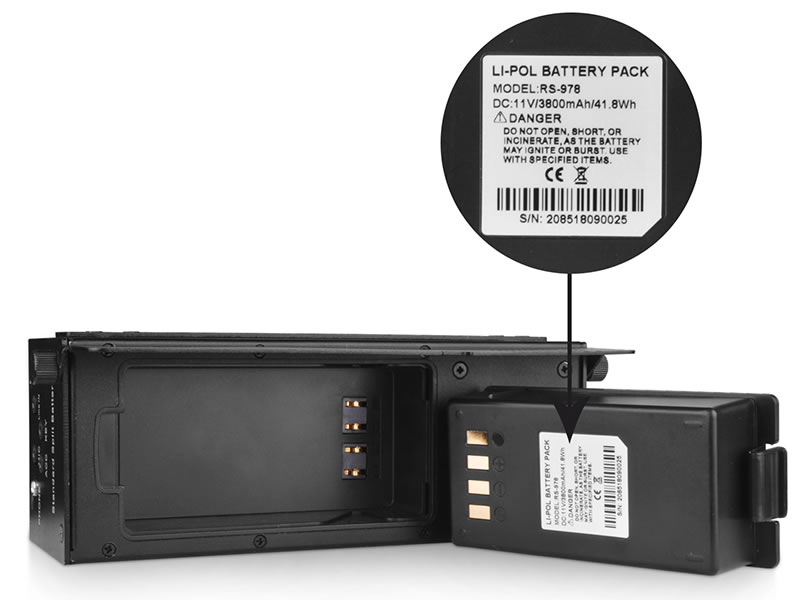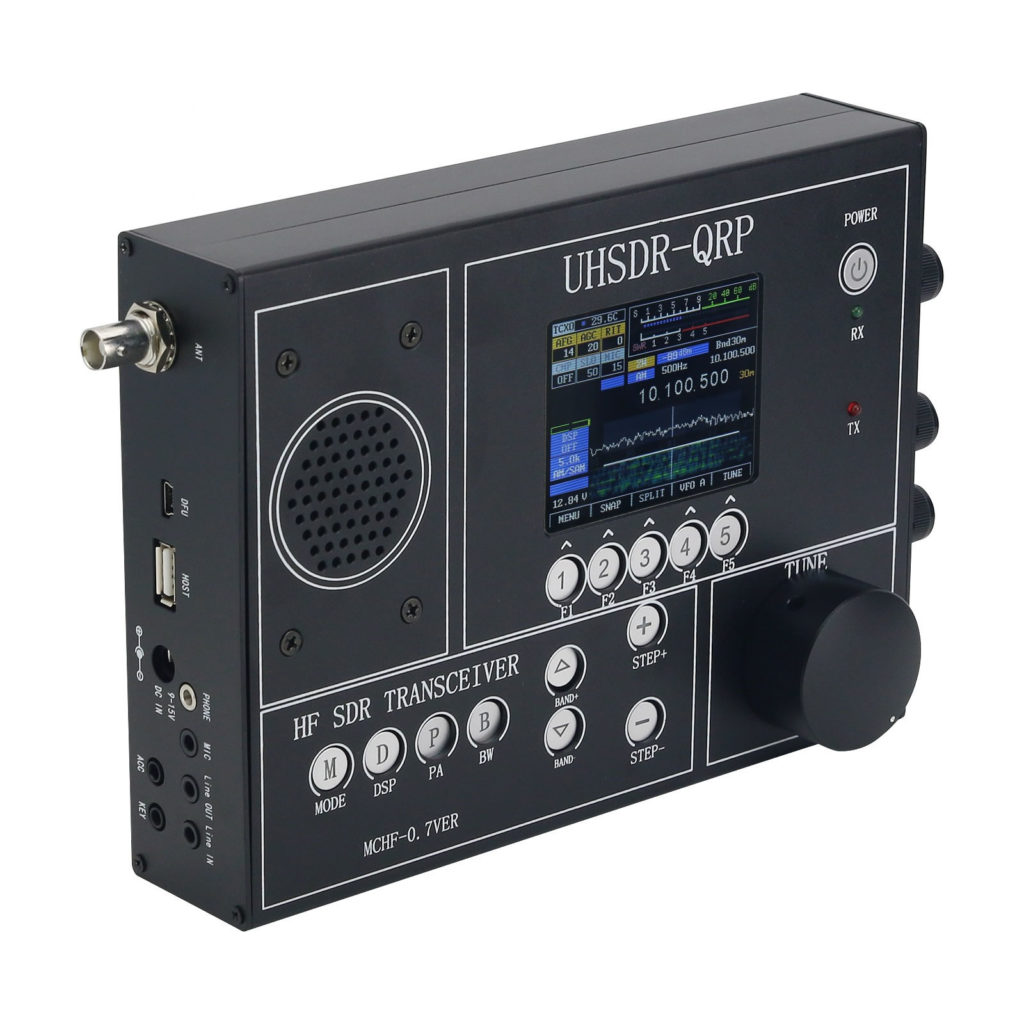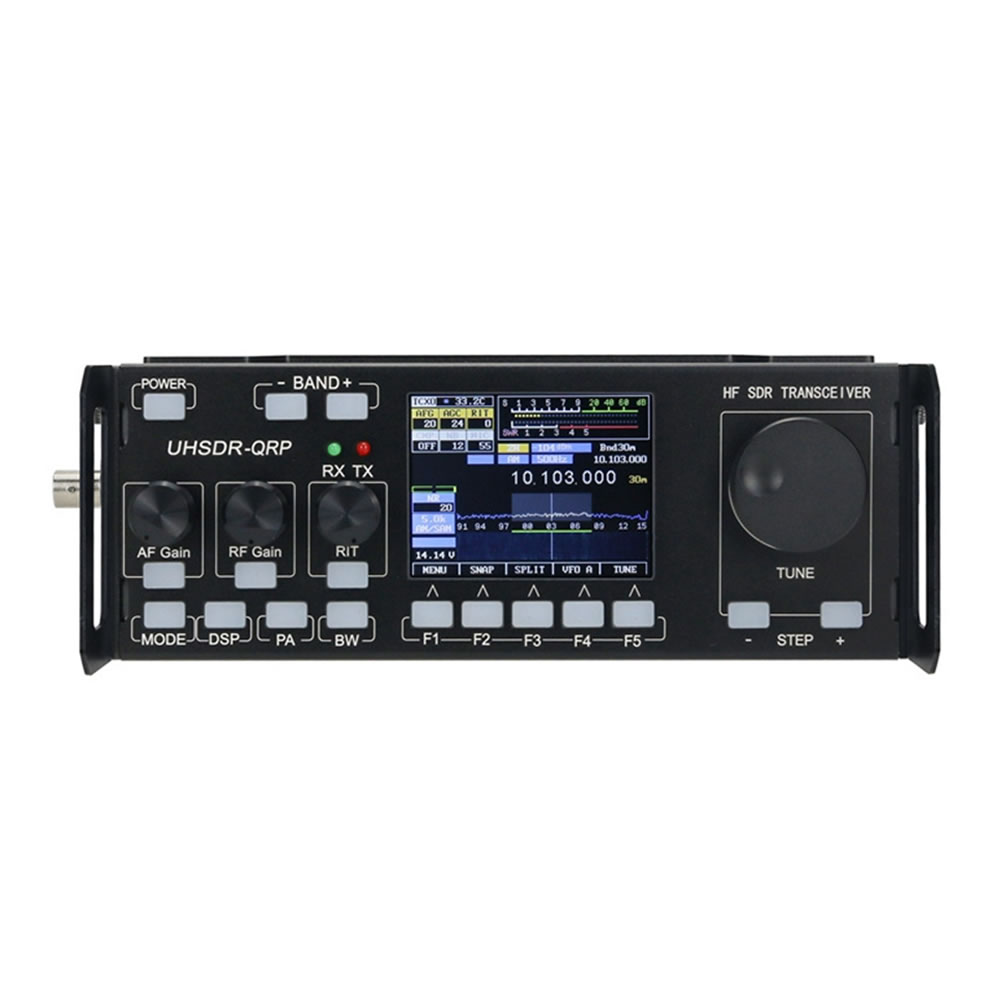Description
Based on an original design by M0NKA, this radio kicked off a whole series of Chinese HF rigs, and you could say directly inspired the Icom IC-705!
The M0NKA mcHF is going to be one of the most difficult radios to write up, simply because there are so many variants and re-branded models out there. I’ll start off with the specs for the most common models, which despite minor differences, are all based on the v0.6 version of the original mcHF. These are sold as the RS-918, RS-918 Plus, RS-928 Plus (aka R928 Plus), RS-958B, RS-978 (which there are 2 versions of), SD-109G, UHSDR-QRP, and more recently as a straight up “mcHF”. These all use the now familiar oblong form factor, with some minor differences to the knobs and case.
Just to slightly add to the confusion, the firmware was split off from the original mcHF project into what’s known as UHSDR (Universal Ham Software Defined Radio) and made open source. This was done to enable radios other than the mcHF to use this same firmware. A group from Germany has made a similar radio that uses this firmware called the OVI40.
Common Features
2.8″ Colour touch screen display (320×240)
Spectrum/Waterfall, Power supply voltage meter, Signal meter, SWR meter, ALC meter
Tune function, VFO mode, Split mode.
DSP (Digital Signal Processing), Noise reduction, Automatic notch filter, RIT,
Built in USB sound card, CAT control (uses the FT-817 protocol), Accessory port that supports amplifier control
Internal microphone with PTT on the main VFO knob (this wasn’t included on the original mcHF)
Common Specs
Receive: 1.8-32MHz
Transmit: 3.5-3.9MHz (80m), 5351.5-5366.5 kHz (60m), 7.0-7.3MHz (40m), 10.100-10.150MHz (30m), 14.0-14.350MHz (20m), 18.068-18.168MHz (17m), 21.0-21.450MHz (15m), 24.890-24.990MHz (12m), and 28.0-29.700MHz (10m)
Mode: SSB (J3E), CW (A1A), AM (A3E), and FM
Minimum frequency step: 1Hz
Antenna impedance: 50Ω
Operating temperature range: -10℃ to +60℃
Frequency Stability: ±1.5ppm (5 minutes on) as standard, or ±0.5ppm (5 minutes on) with TCXO module (which most models have)
Working voltage: 9~15V DC
TX power: 10w (it’s possible to reach a few more watts at full 13.8v, but don’t count on it)
Spurious suppression: ≥40dBc
Carrier suppression: ≥45dBc
Selectivity: SSB 2.3KHz (-6db), CW 500Hz (-6db)
Receive sensitivity: 0.11uV-0.89uV (RFC 50-20); better than -108 dBm (0.89uV) in 2.3 kHz bandwidth; better than -120 dBm (0.22uV) in 300 Hz bandwidth
Dynamic Range: Better than 95dB
RIT frequency fine-tuning range: ±1kHz
Audio output: 0.5W at 8Ω
Differences between v0.6 based models
Aside from the different colour buttons (usually clear or black), and the different knobs (usually black or orange), there are slight differences in the case designs too. Some models come with a fold out “kick stand” or fold out legs to tilt the radio to a more ergonomic angle (look for the knurled knobs on the sides in some of the photos). Some also come with “bash guards” that attach to the sides to protect the controls on the front face. Neither of these can fit on the RS-928 Plus model due to the ends being slightly recessed into the case. The knobs are easily replaceable, as they use a standard 6mm shaft, so it’s very straightforward to customise the overall look with aftermarket knobs, should you so wish.
A few of the models include a battery. The R928 Plus (which seems to no longer be available) had a 2200mAh internal battery, made up of 3 x 18650 cells providing 12.6v max (the charging circuit on these was practically non-existent, and they were prone to failure, which is probably why they are no longer available). The RS-958B (also no longer available) had a 4000mAh battery (some also came fitted with a large heatsink on the top). There are two versions of the RS-978, one with an internal battery, and one with a removable, modular battery. Look for a second DC power input jack marked “Charge”, or in the case of the modular RS-978, a USB-C port marked “13-15v DC IN”.

The models which are sold with orange knobs apparently have a different screen installed to most others (part number BS-188). This can cause problems when installing firmware, and these models MUST use a custom firmware designed to work with these BS-188 screens, or the radio may be bricked. If the radio is bricked, it is possible to recover it with the correct procedure.
The RS-928 Plus (aka R928 Plus) used a different local oscillator, so it requires the firmware to be compiled with the si5351 files included. Luckily, most of the problems with firmware compatibility across the different models have been smoothed out (mostly by a user called Nizar from the user group), so you should be able to install the latest versions of the firmware onto any model.
v0.7 Based models
There are also models available that are based on the v0.7 version of the mcHF, which uses a slightly different, flatter form factor, have a front facing speaker, and contains 3 separate circuit boards instead of the 2 boards found in v0.6 based designs.

Changes from V0.6 to V0.7
The RF board hosts the main power supply, RF PA, BPFs, LPFs, RX antenna switching, TX preamp and PWR/SWR meter circuit.
RF board PA transistors and low noise linear regulators are mounted flat on the board for full thermal contact with the back of the aluminium case.
Due to much higher real estate on the RF board, all signal flow follows linear path of direction without overlap of low/high energy density fields.
Much more space for expanding the LFP module.
The new Logic board has the bottom side facing the RF board and it is mostly ground plane (except U204 and U207) which removes the need of metal shielding plate.
All low level RF generation/decoding circuits are now moved to the Logic board, bundled with the Audio Codec module.
The LCD is mounted on the Logic board to minimize interference.
All clocks – DSP and RF are grouped to together for minimizing noise and easier temperature insulation, again on the Logic board.
New component: U700 is added on the Logic board to provide RX/TX switching for the RF circuitry, independent of the Audio Codec module signals and at the same time saving extra pin usage from CPU.
The frequency encoder is plugged to P1c connector on the Logic board instead of being soldered onto the UI board.
The UI board uses three general purpose encoders that are vertically (90deg) mounted. Those also have integrated switches.
The 0.7 revision uses fourteen LED lit buttons, instead of seventeen. The missing three are the encoder mode buttons, their function is now provided by the encoder built-in push buttons.
The 0.7 revision uses high quality optical encoder (ENA1J-B28-L00064L).
With a slightly bigger LCD – the 3.2 inch HY32
Gallery
Video
Specifications
| Bands: | 10m / 12m / 15m / 160m / 17m / 20m / 30m / 40m / 60m / 80m / Wideband RX |
|---|---|
| Modes: | AM, CW, FM, USB, LSB, FreeDV |
Features
AGC / CAT / Clock / Compressor / CW Decoder / CW Keyer / DSP / Dual VFO / IF Out / Noise Reduction / Notch Filter / RIT / Signal Meter / Sound Card / Speaker / Spectrum / Split Operation / SWR Meter / Voltage Meter / Waterfall
Transmitter
| Minimum RF output (watts): | 0.5 |
|---|---|
| Maximum RF output (watts): | 10 |
Power
| Minimum operating voltage: | 9 |
|---|---|
| Maximum operating voltage: | 15 |
Physical
| Width (mm): | 190 |
|---|---|
| Height (mm): | 69 |
| Depth (mm): | 45 |
| Connectors: | BNC, Line In, Line Out, Microphone, Morse Key, DATA Port, ACC Port, Speaker Out, USB Port, CAT |
Meta
| Also known as: | RS-918, RS-918 Plus, RS-928 Plus, R928 Plus, RS-958B, RS-978, SD-109G, UHSDR-QRP |
|---|---|
| Year of release: | 2018 |
| Reviews available: | eHam reviews |
